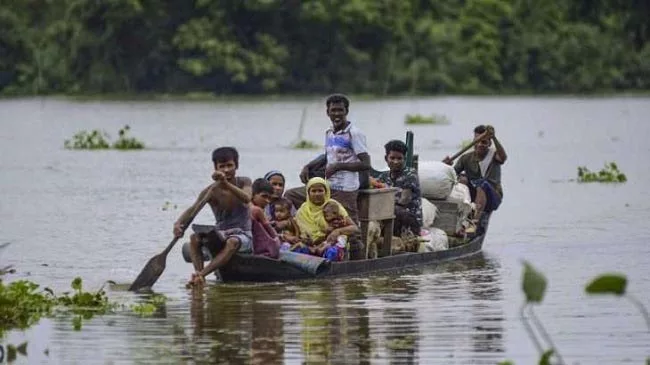The number one problem humanity is facing right now is climate change, which needs immediate action to change the course of the upcoming disasters. People around the world are getting affected by climate change and we are seeing more climate refugees every single day. And what’s worst is it will keep getting catastrophic unless we take immediate action. Some even say that it is too late to worry about the environment because the damage has already been made. But still, we can make a difference and make things better if we act now.
We have already started to see the change in climate and how drastic it can be. Glaciers have shrunk, ice on rivers and lakes is breaking up earlier, plant and animal ranges have shifted and trees are flowering sooner.
Effects that scientists had predicted in the past would result from global climate change are now occurring: loss of sea ice, accelerated sea-level rise and longer, more intense heat waves.
While the western world is showing concerns over climate change and we have seen advocates who are raising their voices against climate change, most of the people are still unaware of it in Bangladesh and very less are talking about it. It is high time as a progressive nation that we take immediate actions and make people aware of the consequences. The government has already started taking actions against pollution but yet Dhaka is considered one of the most polluted cities in the world. And people are barely talking about it. People living in rural areas are getting more affected by climate change. Each year in Bangladesh about 26,000 square kilometers (10,000 sq mi) (around 18% of the country) is flooded, killing over 5,000 people and destroying more than seven million homes. Recently Unicef reported that over Nineteen million children across Bangladesh are facing nutrition deficiency due to flood. This year only Flood in Bangladesh killed more at least 60 people and more than 800000 has been displaced.
The report also said natural disasters, including floods and riverbank erosion, are driving families to city slums, where they face overcrowding and a lack of access to healthy food, education, health services, sanitation, and safe water. As people flee vulnerable coastal areas, most are arriving in urban slums—particularly in Dhaka, one of the world’s fastest-growing and most densely populated megacities. The city is perceived as the country’s bastion of economic opportunity, but it is also fraught with extreme poverty, public health hazards, human trafficking, and other risks, including its own vulnerability to floods. Already, up to 400,000 low-income migrants arrive in Dhaka every year.
The Bangladeshi government increased spending to deal with climate change impacts in rural areas from $884m in 2014 to $1.46bn in 2018. Helping people rebuild their houses and providing relief. The government is helping people building dams in Bangladesh.
In slums, children must often fend for themselves and are at greater risks of malnutrition, child labour, child marriage and exposure to pollution, violence, and abuse, according to the South Asia section of the global report.
The report, titled “The State of World’s Children-2019″ – Children, food and nutrition: Growing well in a changing world”, was launched a week ago and has been uploaded to the Unicef website.
The Unicef’s flagship report examines issues related to children, food and nutrition, providing a fresh perspective on a rapidly evolving challenge.
The report said despite progress in the past two decades, one-third of children under age 5 are malnourished, stunted, wasted or overweight while two-thirds are at risk of malnutrition and hunger because of the poor quality of their diets.
The report was prepared based on data from “Multiple Indicator Cluster Survey-2014,” says Unicef Bangladesh, adding that the next report is due next month.
“The latest report of the country’s multiple indicator cluster surveys is due next month and it will provide the updated situation of children nutrition.”
The report said a total of 58.7 million children under 5 were stunted and almost 25.9 million were wasted in South Asia. Now, more children and young people are surviving, but far too few are thriving, it said.
In a country like Bangladesh where 60 percent of the population counts on agriculture for their livelihood, this means children from the poorest families are most likely to go hungry, as Bangladesh is seeing severe agriculture losses.
The reduced production in agriculture also leads to an increase in food prices, hitting the poorest families the hardest. Besides, a rise in communicable and non-communicable diseases linked to changing climate conditions and unplanned urbanisation also threatens children and their families, Unicef said in the report.
Every year due to flooding people are facing severe diseases include diarrhea, hepatitis A, cholera, dysentery, typhoid, dengue and chikungunya fever. The government is helping out by providing free treatments and medical facilities.
As humanity is facing its worst crisis, some are yet to recognize the effect of climate change. But people all over the world are getting more conscious and aware. Even world leaders are raising their voices. So we should keep trying our best not to do any more harm to mother nature and save the future of the Earth.
[zombify_post]





